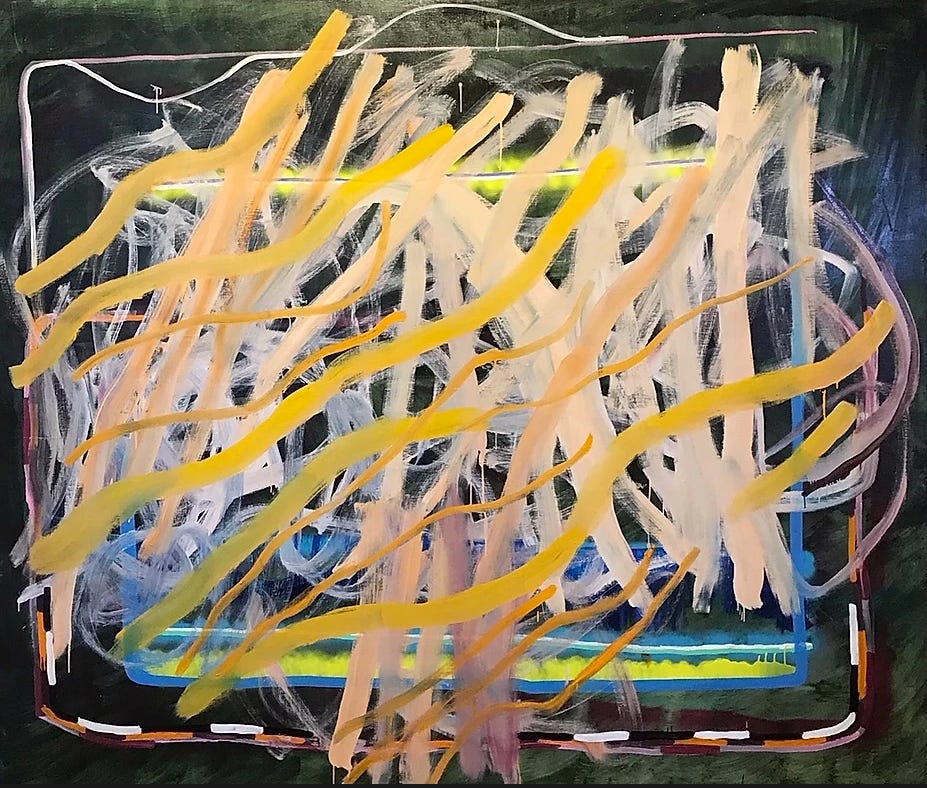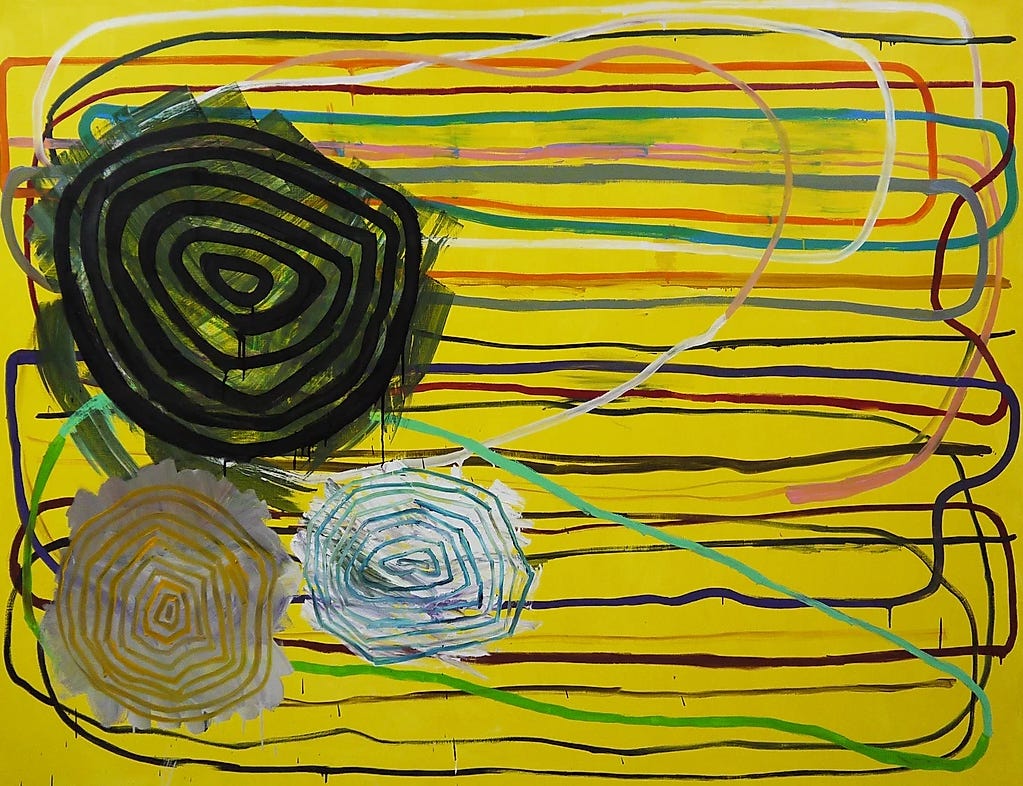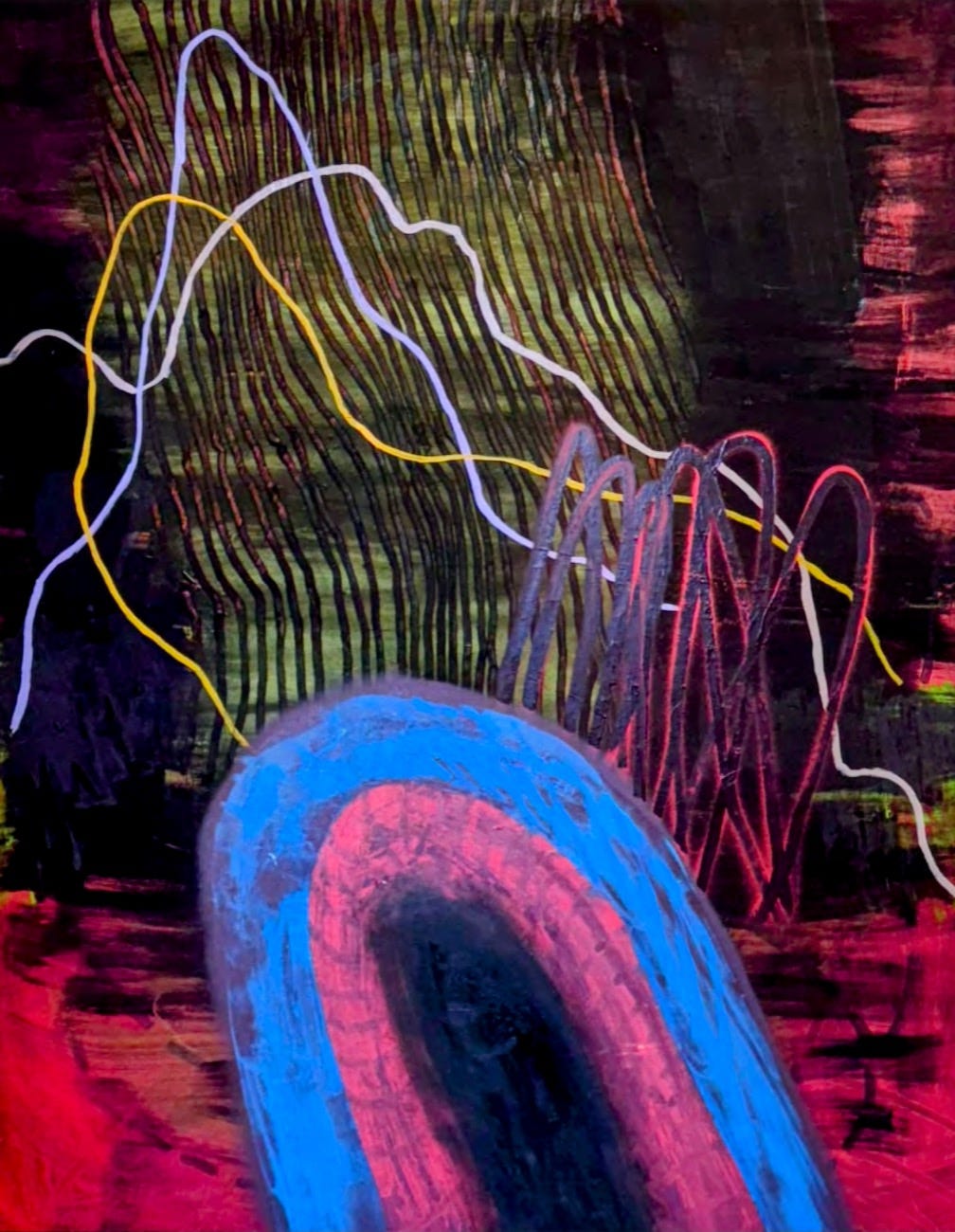The Abstract Affinity
The Paintings of Becky Yazdan
The authority of the abstract emerges not only out of traditions and legacies of creative affinity, but from certain choices that set the tone for future bodies of work. An artist can choose either serialized or divergent forms. The mark one leaves is dependent upon this choice above all. If one chooses serial forms, then one should make sure their work is good enough to stand the test of time. Devotion to a single aesthetic can be either stultifying or glorious depending upon the ability of the artist to look past the obvious into multiple versions of an idea. Many well-known artists have done exactly this.
Its obverse is an aesthetic position that allows for multiplicities. In the oeuvre of Becky Yadan we witness a sequence of paintings that establish an idiosyncratic separateness characterized by a disciplined orderliness to the mark-making and use of negative space, creating ambiguously conceived yet discrete encounters that each employ a certain trope. Her images are accompanied by imaginative titles suggesting an intimate context. They successfully marry discipline and rigor with a regard for the lessons of real life, implying causality and agency in the act of painting itself.
Yet they are also pleasurably oblique; they entice one into a state of dynamically charged aesthetic inquiry. Yazdan is extremely driven, extremely connected to artistic ideas, yet she doesn’t confuse over-consistency with rigor. Too many artists spend a lifetime perfecting one set of rules in their work. Yazdan only wants to remain true to the process that reveals truth, knowing full well that it’s messy, that it doesn’t always reveal easy answers, and that how a painting makes us feel is more important than how it can reinforce already tried and true aesthetic values.
Yazdan’s work is extremely expressive yet also introspective. Her achievement lies in refusing to establish a signature gesture or mark, and in maintaining an intensity that manifests as ambiguous, charged space. This allows for diverse imaginings that resist feeling in any way counterintuitive. What they actually accomplish is, in both a sequential and cumulative fashion, to present abstract paintings as solutions to questions about art, emotional or medical issues, memories whether pleasant or troubling, and any struggle or crisis that may seem to overtake us. Each and all of these subjects becomes a painting, and then the issue or problem is either partly assuaged or finds in the work of art a beautiful conclusion.






